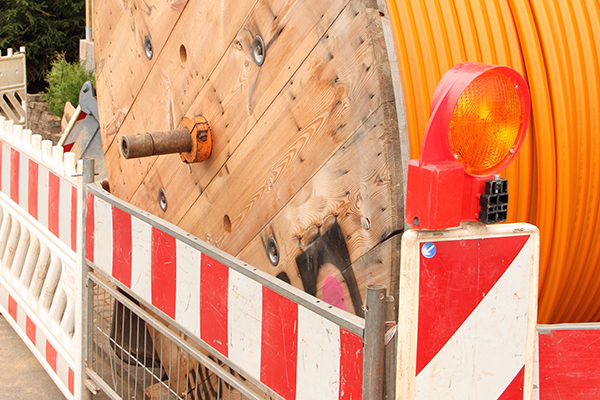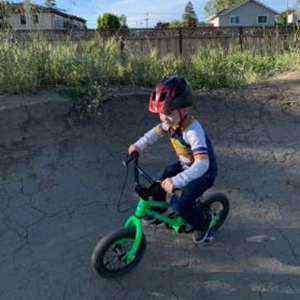
Expanding Broadband in Santa Cruz County
by zach friend, county supervisor

It is estimated that as many as 1 in 3 California households lack broadband access with a disproportionate number of those households consisting of seniors, those with low-incomes and adults self-identifying as having a disability
The pandemic highlighted the critical need for access to affordable, high-speed internet. For students participating in remote learning, parents attempting to work remotely and our families needing to access tele-health, high-speed internet is an essential resource. Yet, many households in our community, and throughout the state, either have limited bandwidth to meet their needs or are priced out of options.
The County has taken some steps to improve the availability of broadband and the state and federal governments are also making efforts to expand access.
It is estimated that as many as 1 in 3 California households lack broadband access with a disproportionate number of those households consisting of seniors, those with low-incomes and adults self-identifying as having a disability. Similar challenges exist in Santa Cruz County. For context, 92 percent of households nationwide with incomes between $100,000 and $150,000 have broadband service, while only 47 percent of households making less than $25,000 a year access these technologies. For areas that are covered, most of the lack of service stems from cost, and for those in rural areas (or even relatively suburban areas of our county) there are little to no high-speed internet options – increasing the digital divide.
County Efforts
The County of Santa Cruz has developed a series of policies and programs to encourage public and private investment and proliferation of broadband infrastructure. These policies include a “dig once” policy where fiber conduit will be installed whenever public rights-of-way are broached (significantly reducing the cost and also preventing the need to dig up a road that was recently paved in order to add conduit later). Additionally, the County revised permitting fees to directly reflect actual county cost and streamlined the permitting process for fiber infrastructure projects.
The County established common technical specifications for broadband infrastructure projects to speed up the process for those increasing this type of infrastructure, created a master lease agreement for companies interested in locating their infrastructure on County assets and the developed a Broadband Master Plan to guide future policy and infrastructure development. Lastly, the Board of Supervisors voted to allocate some of the recent federal relief funding toward increasing broadband access and infrastructure – and previously, relief funds were given to our local libraries to provide for wi-fi hotspots to be checked out by patrons. This has led to a number of areas in the unincorporated area seeing increases in speeds and some reduction in costs. New fiber lines are running through major corridors like Soquel, Freedom, San Andreas and other locations that provide the framework for increased services.
State Efforts
A recent report commissioned by the California Public Utilities Commission found that the cost of building high-speed internet fiber connections to every unserved building and house in the state could occur with an investment of approximately $6.8 billion. The California State Association of Counties (CSAC), which represents the interests of counties at the state level, has been working with the Newsom Administration to invest $8 billion of the federal relief funding and other new funding made available for this purpose to close the digital divide.
As CSAC notes, this level of investment could give households, businesses, schools, and hospitals access to high-speed 100 Mbps broadband and give a giant boost to programs that would spur the adoption of internet service (such as devices, digital skills training, service subsidies, and language access programs and products).
What exactly would the state funding do? Most of it would provide 100/10 Mbps fiber optics to buildings and houses currently without it. About a third of it is proposed to construct a statewide middle mile network (to close location gaps where fiber infrastructure occurs) so that any provider could tap in and provide services to underserved areas.
This funding would come from the new one-time funds available from the federal relief funding, which includes funding specifically for broadband infrastructure and also more flexible funding that can be applied for things such as broadband expansion.
Federal Efforts
One of the largest federal efforts to increase broadband access has been in the recent relief funding. For example, The Emergency Broadband Benefit provides a discount of up to $50 per month towards broadband service for eligible households (such as those at 135% of the federal poverty guidelines or that experienced a substantial loss of income during the pandemic). The federal funding also provides significant offsets for schools and libraries looking to provide high-speed internet services and funds will be allocated directly to states to help build out broadband infrastructure projects. Additional federal legislation has been proposed to close the digital divide even further that is currently under consideration.
These local, state and federal efforts will help ensure equitable access for broadband and close the digital divide for communities such as ours.
As always, I appreciate hearing your feedback on this or any other issue I can help you with. Feel free to call me at 454-2200 with any questions or comments.


You May Also Like

Your Pets
June 1, 2021
Behind the Scenes
May 28, 2021

